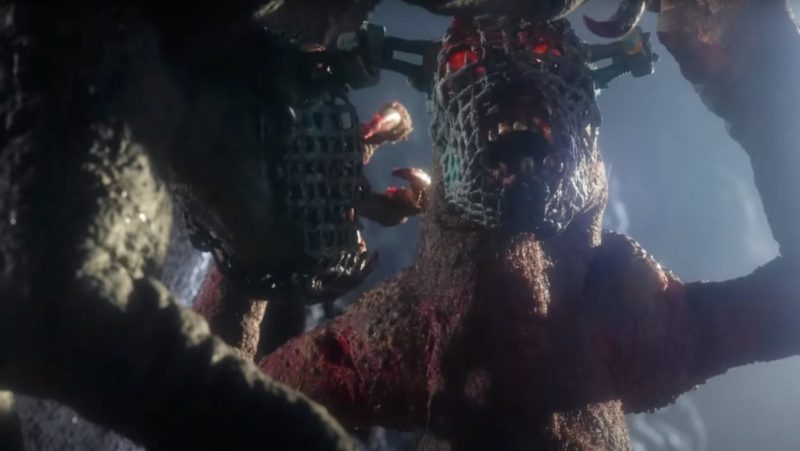
What makes a man create a dialogue free, cynical, dystopian animation that looks somewhere between a Tool music video and a Hieronymus Bosch painting that contains no main character or overt plot? Sounds like a tough sell for anyone, but for Phil Tippett, who spent 30 years chiseling away at his magnum opus Mad God, it was out of necessity.
Here’s the scoop, in the early 90’s, Phil saw that stop-motion animation was going extinct. This was evident when he was demoted off of Jurassic Park, which was originally going to use a hybrid form of his stop-motion (that Laika Studios would later use). ILM came in last minute and famously showed Spielberg and Kennedy a computer animated dino-walk cycle that essentially changed modern special effects as we know it. That said, Tippet was still a key player in showing the computer animators how to properly get a realistic dinosaur performance with his extensive knowledge in puppetry. Phil is still involved in this area, as you can see on his extensive credits list.

Phil was becoming extinct, and his intricately performed stop-motion was going with him. Luckily, he began work on Mad God a few years before the Jurassic Park mess. Now, he and his team of rotating rag-tag animators, many of whom had little to no experience, would work on Mad God between projects for years to come. Occasionally, Phil would show parts of the work at film festivals, which helped him launch several successful Kickstarter campaigns the past few years to finish the film.
Now, the backstory is interesting, and fairly well-documented, but nothing will quite compare the viewer for what Mad God really is. It simply must be seen to be believed. Nothing I write here will manage to capture what it is.
Mad God opens with a simple text form the Book of Leviticus. Specifically Leviticus 26:27-33, which is the “Holy shit, God will crush us all in a wrath of fury and anger, leaving us smelling like decay and waste” for the uninitiated. It’s scary stuff. The film is essentially a stop motion translation of those verse, but as if transcribed by Carl Jung, creating an unconscious interpretation of what that all meant to Phil. And boy howdy, he had a vision, and lots of nightmares, and with his particular skill set was able to share them with us.
The first iteration in the film sees a giant spire, surrounded by indistinguishable people. The sky turns to black and engulfs everyone. Then a lone soldier is dropped by a makeshift elevator deep down in the earth. He goes through many layers of desolation on the way down, but lands in arguably the worst of it, the bottom. The unknown soldier steps out and checks his map, which decays every time he unfolds it. Surrounding him are piles of junk and a nearby hostel that has images of debauchery in every window. A giant toothy character with large swinging mammaries comes out and checks the landscape. The soldier hides from the creature and moves deeper into the world, past giants, being electrocuted, spraying feces that is re-digested and used to create the indistinguishable people that mostly habitat the area. The people work mindlessly turning wheels and cogs, and are killed off constantly (and humorously) by their hostile environment. They seem to be making large, metallic obelisks, reminiscent of 2001.
From what I can interpret, I see this part of the Mad God, as the industrial age, or possibly a riff on the carelessness of a god in a world where people are shit out to work towards an oblivion of nothingness… or maybe not? Who knows? The unknown soldier does something important to the story at the end of this segment, and something happens as a sort of non-reaction to the soldier’s efforts, but removing the viewer that privilege would be wrong on my part.

The movie pretty much moves like that. There are segments of doctors preforming a surgery, ripping out jewels and money and finally a baby creature from the patient. A robed, religious man rifles through papers and maps. Another soldier is sent down to a city in ruins. Etc.
There is much to be gleaned by observing the images in Mad God. I gather from it all that Phil Tippett isn’t happy with how the world is turning out. How history has treated man. How if a God exists, no effort is given to protect the people. How people don’t seem to care to look out for each other. How overseers seem to still rule the land and everyone whom inhabits, while they look down from up above.
Now, this cynicism is a bit much. Misanthropic, even more fitting to the events displayed… and yet, there is a beauty to it all. Gorgeous scenes of destruction and annihilation done to rather pretty pieces of music. A brief, but colorful mid-interlude involving bugs. In the end, I find myself not being able to get the film out of my head. I find myself supremely entertained by it all, despite not knowing what to make of it.

As of yet, no distributor has purchased Mad God, but I don’t see it disappearing. I see the film as something that will surely garner a cult following. In terms of independently produced animation, it is out of the stratosphere, and will be regarded, much like Bosch’s towering paintings, a real work of art.
I imagine that is what Mr. Tippett holds in highest regard, being a motion-picture artist. I think that is why he isn’t afraid to publicly shun Lucas and Spielberg, his former co-creators, whom for a lack of tact on my part, sold out. He made a film they could never touch. An unmarketable, gross, violent, angry film that is a pure work of beautiful art. There will never be another Mad God. It is impossible to ever replicate 30 years of fingerprints moving 24 frames a second.
Mad God was screened digitally at the 2021 Fantasia Film Festival




